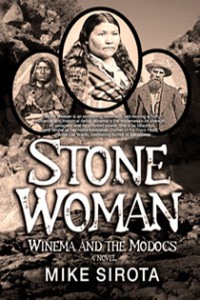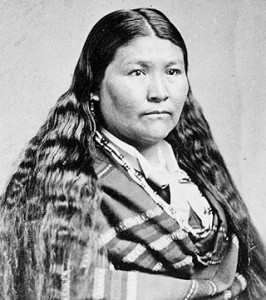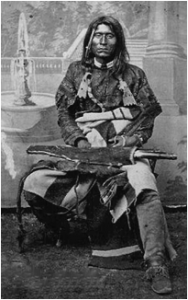 This post first ran in 2014, and that same year Stone Woman was honored by the San Diego Book Awards Association as Best Historical Novel.
This post first ran in 2014, and that same year Stone Woman was honored by the San Diego Book Awards Association as Best Historical Novel.
No, this post is not about a song from Frozen. (Great song, though.) I imagine you all know the old saying that begins, “If you love something, let it go.” Well, that’s exactly what I have just done with a historical novel, titled Stone Woman that—for me—has been a labor of love for thirty-plus years. Let me explain.
One Project Led To Another
During the early 1980s I decided to write my first horror novel—working title, The Modoc Well. The story takes place in northern California, near the Oregon border, and involves a demon suggested by the mythology of the Modocs, a semi-nomadic indigenous People who for centuries roamed that area of the two states. (Bantam ultimately published the novel in 1991 as The Well, and I republished it a few years ago under its original title.) Since the first few chapters would take place during the 1850s, I did my due diligence as a professional writer and undertook a great deal of research on the Modocs, a tribe about which I knew little.

Winema, “Woman of the Brave Heart”
What I discovered blew me away and, quite honestly, transcended all fiction.
The whole time I worked on the horror novel, I could not get the real story of the Modocs out of my head. I even wrote a “statement” chapter in The Modoc Well in which my main character takes his family to the Lava Beds National Monument, site of the Modoc War with the U.S. Army. There, he gives them a brief overview of what happened to the People. (Have a look at my post: “The Modocs: Reality and Myth” for that story.)
The Short Version
The Modoc War took place over a period of six months spanning 1872-73. Stone Woman (subtitled Winema and the Modocs) covers the two decades preceding the war through about four months of its aftermath. What happened to the Modocs was, quite frankly, a microcosm of just about all other indigenous People on our continent. See if this sounds familiar.
White man shows up, professes peace, wishes only to share the land. White man decides he wants most of the land, confines indigenous People to smaller, less fertile areas called reservations. Indigenous People rebel, fight bravely for the right to exist as they have always done. Indigenous People are defeated, many killed, their way of life taken from them forever. Replace the words “indigenous People” with the name of just about any North American tribe, and the story is the same—as it was for the People known as Modocs.

Captain Jack, Modoc chief.
But these People did not go easily. And therein lies their amazing story. A small tribe to begin with, the Modoc fighting force consisted of just over fifty braves, assisted by their squaws. Led by their courageous, enigmatic chief, Captain Jack, the Modocs held upwards of a thousand soldiers, civilian militia, and other Indians at bay for most of those six months from their impenetrable Stronghold in the foreboding Lava Beds. Nor did they lose a single brave during the first four months, while their attackers suffered many casualties. Tribal dissension and a lack of food, water, and ammunition finally did them in.
In Part Two next week I’ll discuss how I decided on the approach to take in presenting this compelling story. I will also talk about why it took decades before I released this book. The eBook and paperback, by the way, are available from Amazon.
